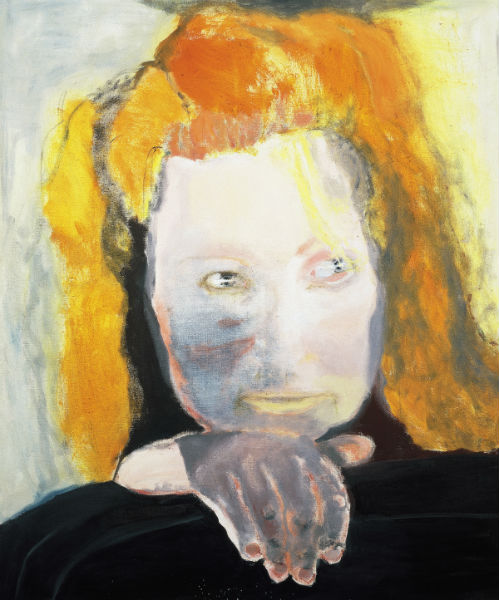
When Marlene Dumas saw herself as banal and evil
On the artist's birthday we ask why she named this self portrait after a famous description of a Nazi war criminal
Marlene Dumas’s 1984 self-portrait might remind you of many things: women, hair colour, slightly coquettish expressions. Yet it really doesn’t bring to mind the Nazis.
So why did she choose Dumas – who celebrates her 65 birthday today – choose to name this painting Evil is Banal, echoing writer Hannah Arendt famous description of Adolf Eichmann, one of the Holocaust's chief organisers?
Writing in our Dumas monograph, the Dutch critic Dominic van den Boogerd offers a link between Eichmann’s Third Reich and Marlene’s country of birth, South Africa.
“She is looking back over her chair, her chin resting on her hand, her eyes fixed on something that remains out of sight,” writes Boogerd in our Dumas monograph . “Her blond curls, painted like [Post Impressionist Pierre] Bonnard’s blossoming mimosa, create a shimmering halo; the countenance is bleached out in a whitish light. The lines that cut across the pupils give the gaze a cold, strange quality.
“On several occasions it has been suggested that the bewildered expression of this self-portrait reflects the awkward feelings of a sweet young girl who is white in South Africa, and therefore part of the oppressive system of apartheid whether she likes it or not.”
Dumas actually painted the work after moving to Amsterdam – where she has lived since 1976 – copying her pose from a photograph of hersel chatting in a car (the artist always paints from still images, rather than from real life.)
While she doesn’t directly allude to South African apartheid personally, she has acknowledged that the painting depicts a certain double standard.
“With this portrait, that was a snapshot of me sitting in a car talking to people which was after an exhibition or show,” the artist told National Public Radio in 2008. “In this snapshot, I had this expression where I thought, oh my goodness, you know, there you have this person, me in disguise trying to please everybody or so but there was a sort of fakeness in it and I thought, you know, realizing things about your own relationship to people and how you react.”

A youthful spell of duplicity is hardly a crime against humanity. Nevertheless, Dumas seems to suggest that a tricksy, deceptive capacity lies within all of us, even girls with shimmering blond curls. You can see this work and 499 others in our book, 500 Self Portraits.